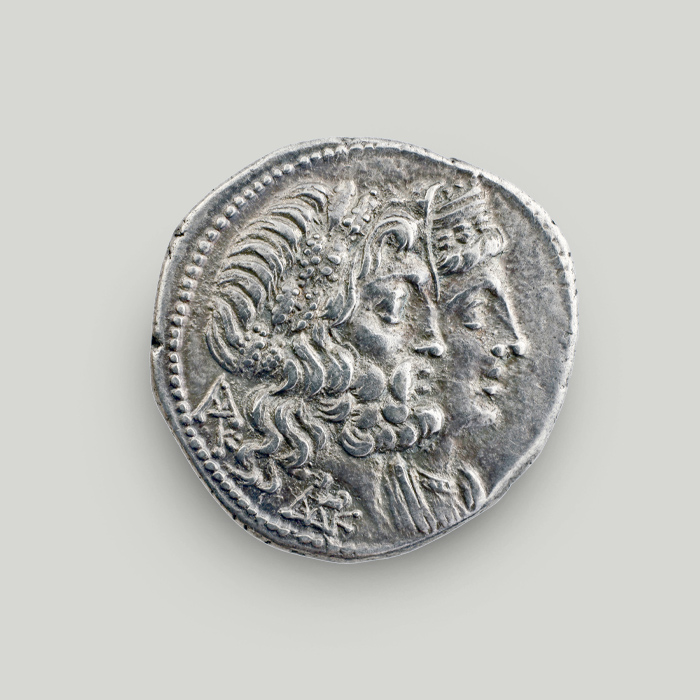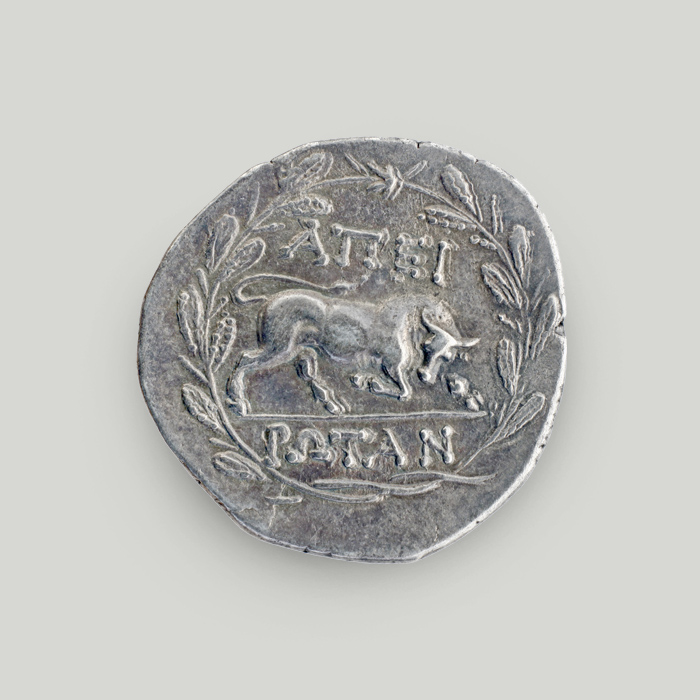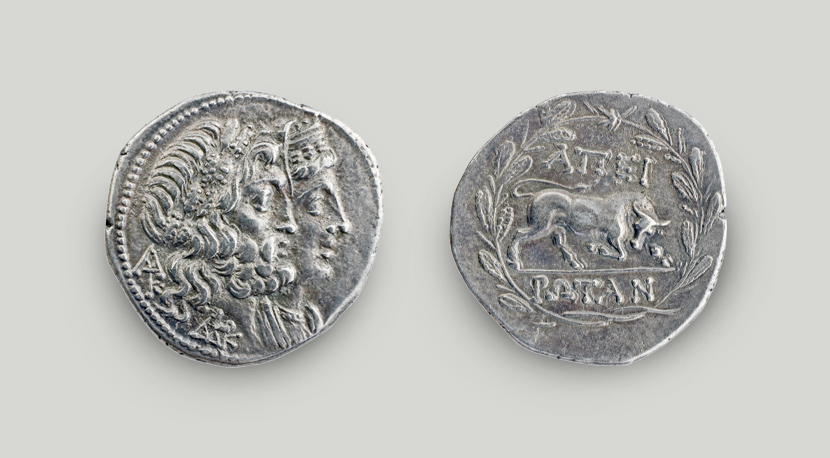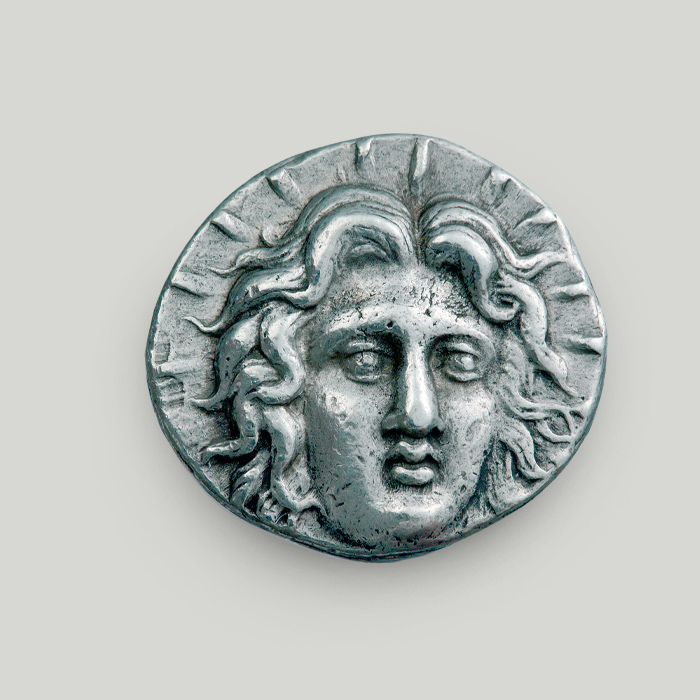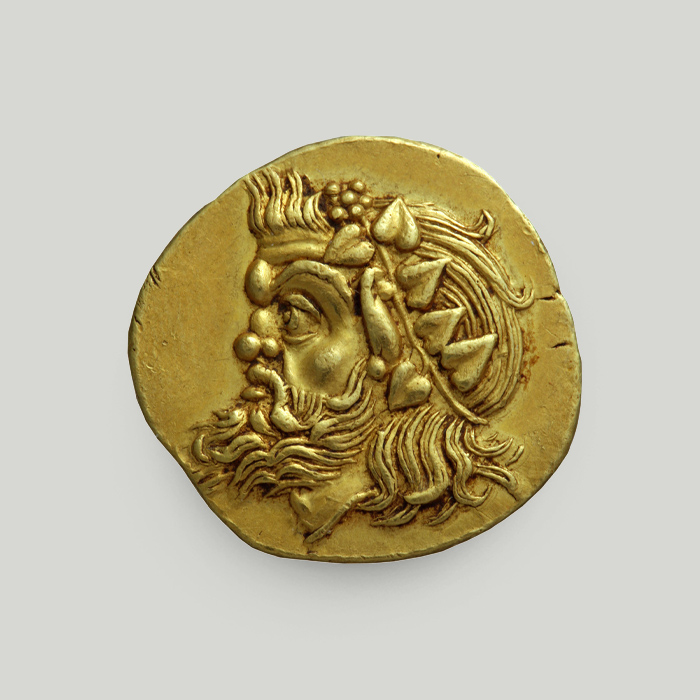Silver didrachm, Epirote League
The silver didrachm of the Epirote League depicts Dodonian Zeus, the patron and protector of Epirus, alongside his consort Dione. This is the only occurrence of a god being depicted with a consort. The Epirote League was a confederation of city-states in the region of Epirus during the Hellenistic period. It was established in 232 BCE based on democratic principles.
Obverse
Heads of Dodonian Zeus and Dione next to one another in profile facing right, within a circular dotted border.
Reverse
Bull charging to the right enclosed in an oak branch wreath. The legend reads the local name ΑΠΕΙΡΩΤΑΝ, which is Dorian dialect for “of the Epirotes.”
The Epirote League
The history of the Epirote League is associated with the rise and expansion of the Molossian tribes. Its predecessor was the Koinon (League) of the Molossians, whose leader was charged with multiple duties.
The Molossian League was established in the 4th century BCE (between 330 and 325 BCE), with other tribes and cities joining the Molossian nucleus. The administration scheme was an amalgam of monarchy, city-state and tribal organisation.
City-states and tribes joined the confederation as members. However, the king still had the power. In other words, the new scheme was still a limited monarchy.
Once a year, the king and citizens exchanged vows. The king vowed to be subject to the laws. In turn, the citizens vowed to obey the king.
Ptolemy was the last king of the Molossians. After his assassination in 232 BCE, the Epirote League was formed.
The new league was based on more democratic principles, with decisions made by the general or a triumvirate of leaders.
During this phase, the first coins were minted bearing the name of the Epirote League.
The worship of Zeus and Dione in Epirus
For centuries, the oracle at Dodona was dedicated to the worship of Gaea. As the cult of the 12 Olympian gods spread in Greece, the oracle was dedicated to Zeus.
However, the priests and the Epirote citizens could not imagine the oracle without a female deity. Therefore, they made up Dione, a goddess named after Zeus (Dias in Greek).
Dione was as much of a legitimate consort of Zeus as Hera. She belonged to the first generation of gods. She was born either to Uranus and Gaea, which made her a Titan, or to Oceanus and Tethys, which made her an Oceanid. According to several ancient sources, she was the mother of goddess Aphrodite.
The unique depiction of the divine couple
The silver didrachm of the Epirote League depicts Zeus and his second legitimate consort, Dione. Dione was only worshipped in Epirus alongside Zeus of Dodona, the patron of Epirus.
This is the only occurrence of Zeus being depicted with a consort.
The silver didrachm on modern currency
Ancient coins are a common theme in the banknotes of the new Greek state established after the War of Independence.
The 2 sides of the silver didrachm of the Epirote League are depicted on the back of the 100-billion-drachma banknote of 1944.
Fractions and etymology
As suggested by its name, the didrachm equalled 2 drachmas. Each drachma equalled 6 obols.
Before the invention of coins, people used iron spits of 1-1.5 meters in length for their daily transactions.
The spit was called ovelos, and 6 of them were considered a standard handful. This handful was later dubbed “drachma”, as it could be grasped (drattomai in Ancient Greek) in a person’s fist.
When coins started to circulate, the word ovelos (the previously used spit) changed to ovolos (“obol” in modern numismatics) and was used to denote the value once held by 1 spit, i.e. 1/6 of a drachma.
The Alpha Bank Numismatic Collection is not open to the public.
Research visits to the Numismatic Collection can be organised upon request.
Contact us to book your visit.
